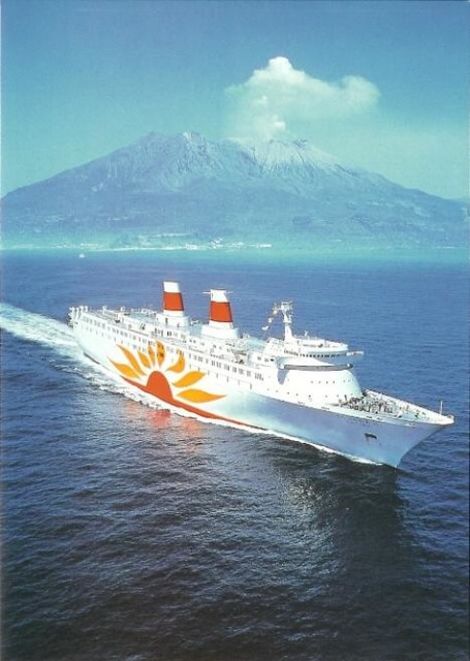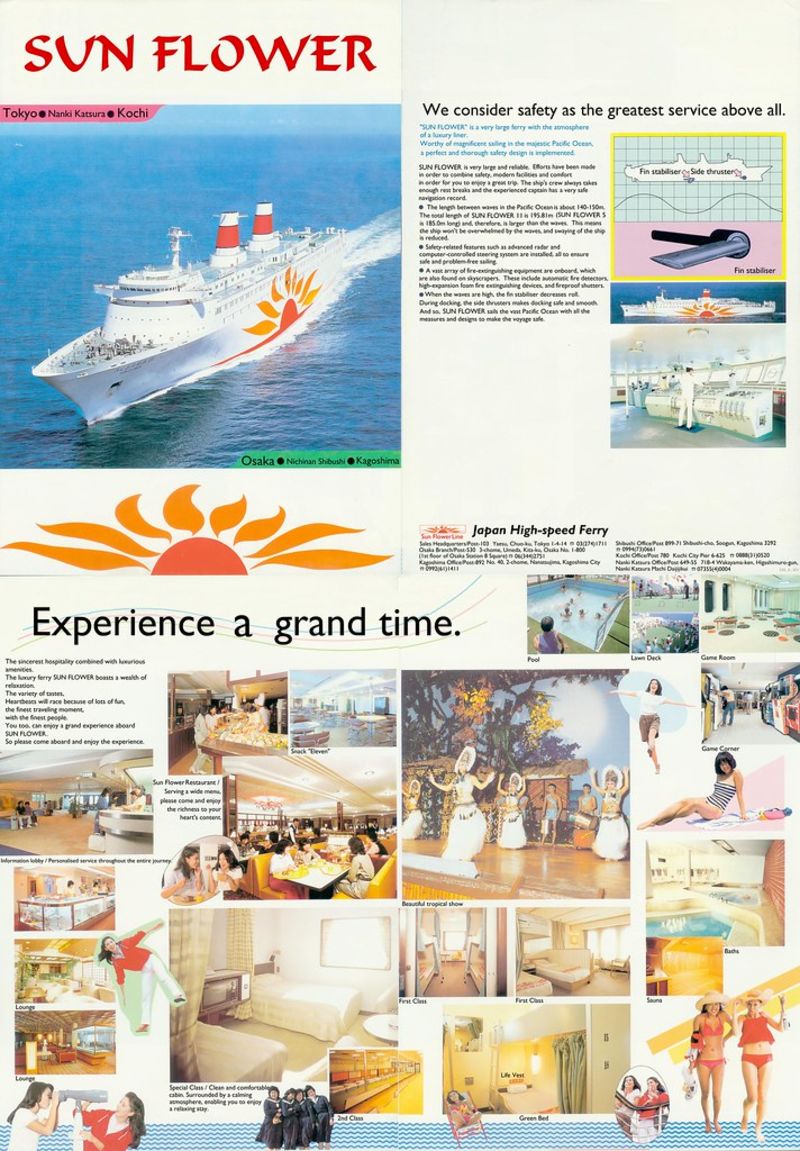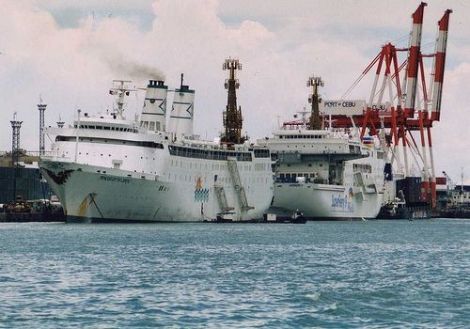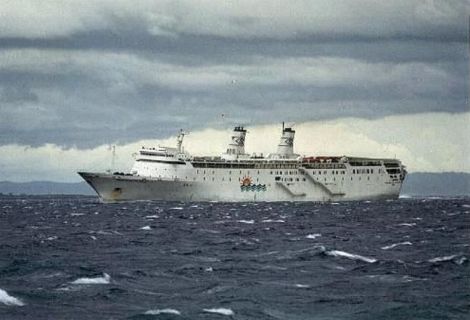On this day in 1998, tragedy of an unfortunately all too familiar sort struck the Philippines when Sulpicio Lines’ inter-island ferry Princess of the Orient sank off the coast of Cavite on a voyage from Manila, in an ignominious ending for a ship that started off as one of the grandest of its era.

Like most Philippine ferries, especially those of Sulpicio, Princess of the Orient started life in Japan. Until the early 1970s, Japanese ferries were mostly plain, utilitarian vessels designed to cater mostly to inter-island truckers, but with the dawn of the new decade, luxurious European-style cruise ferries designed to appeal to leisure travelers came into vogue. Of them, Sunflower 11 was the grandest of her time.

She was built in 1974 by Shin Kurushima Dockyard Company for Nihon Kosoku Ferry Company as the latest in their series of Sunflower ships that began with the original Sunflower of 1966, and got larger and more extravagant with each iteration. Measuring 13,598 gross tons and 643 ft long, she was the largest ferry in Japan at the time. Her 28,000hp MAN-Kawasaki diesels gave her a top speed of 25 knots, and she featured an array of amenities from a health spa to private cabins, multiple lounges, restaurants, children’s play areas, and bars. On the technological front, Sunflower 11 featured an advanced automatic stabilization system that could autonomously shift ballast water to maintain level, and a computerized steer by wire system that replaced all mechanical linkages for the rudder and stabilizers with electronic signals. Although the basic hull shape was shared with the earlier Sunflower 5, Sunflower 11 featured notable differences - a yacht-like clipper bow, traditional cruiser stern, aerodynamic forward superstructure, and a balanced 2-funnel profile that all made her look more like a classic ocean liner than a 1970s car ferry.
Unfortunately, the new class of big Japanese luxury ferries did not fair well in the aftermath of the 1973 oil crisis, and Nihon Kosoku had borrowed heavily to finance their building boom. By the early 1980s, they were bankrupt and Sunflower 11 came under the ownership of the shipyard in exchange for debt forgiveness, but remained in operation with Nihon Kosoku under charter. This lasted until 1990, when the ship was acquired by the rival Nihon Enkai Ferry Company and renamed Sun Flower Satsuma. This lasted only 3 more years, with Sun Flower Satsuma going to Sulpicio Lines in 1993 to become their Princess of the Orient.
At the time, despite an already shaky safety record, Sulpicio was the largest ferry operator in the Philippines, serving more destinations with more ships and carrying more passengers than anyone else, and, as the largest and most luxurious ship in the fleet, Princess of the Orient became their new flagship.

Sulpicio made a number of modifications - extending the aft superstructure, cutting a new vehicle door and ramp into the bow, and converting a number of lounges into additional passenger accommodations. All this raised the ship’s gross tonnage by about 500, and left her with a slight, permanent list to port, which wasn’t regarded as significant at the time.

In 1997, Princess of the Orient suffered a fire while refueling, and was sent to Singapore for repairs. Upon redelivery, she was given a clean bill of health by the Philippine coast guard, but still bore evidence of the fire. Her ballast control system was no longer operational, her stabilizer fins were seized in place, and her damaged engines could now make only 18 knots.
On September 18, 1998, at around 10pm, Princess of the Orient set out from Manila in the midst of Tropical Storm Vicki, with high winds and harsh seas. Most other vessel operators had decided to stay in port, but there was no official order to the effect, so her captain decided to chance it. Perhaps due to the storm, there were only 388 passengers on board, which did prove fortunate.
Due to poorly loaded, unbalanced cargo, combined with the high tropical storm winds, and the ship’s inherent list and inoperable stability systems, Princess of the Orient began listing severely and taking on water just 2 hours out of Manila, and sank in 55 minutes. Of the 388 passengers and 102 crew on board, 95 lost their lives, including the captain. Survivors floated in lifeboats through storm conditions for 12 hours before being rescued by fishing vessels.
Princess of the Orient, was, sadly, just one of several Sulpicio ships to meet such a fate - Doña Paz in 1987, Doña Marilyn in 1988, and Princess of the Stars in 2008, along with a number of other incidents -fires, grounding, etc. Ultimately, the Philippine government revoked their license to carry passengers in 2015, and the company rebranded itself as Philippine Span Asia Carrier Corporation, and now operates exclusively as a cargo line.